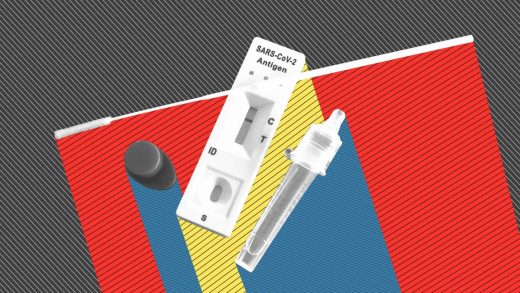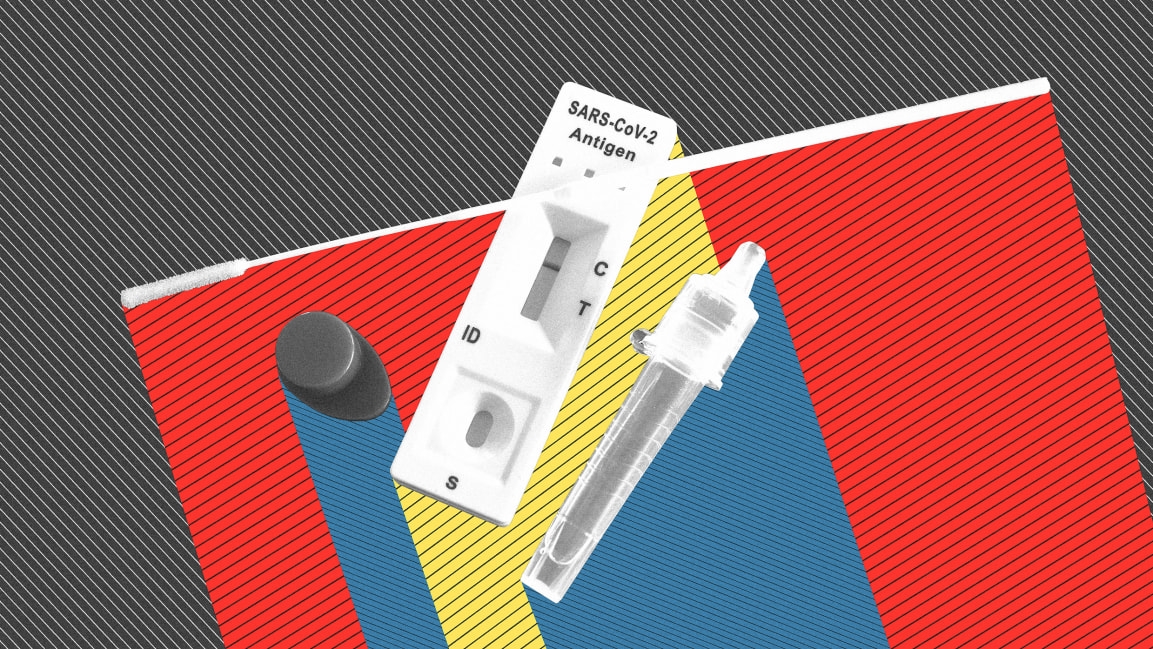How the U.S. could stop the omicron explosion
The omicron variant is spreading fast: In the U.K. and in Denmark, where most people are vaccinated, omicron cases are doubling every two days or in even less time. In the U.S., over roughly the last week, the percentage of COVID cases caused by the variant grew sevenfold. The virus may multiply 70 times faster than delta in airways.
Hospitals that are still struggling to deal with delta cases could soon be overwhelmed—even if omicron is eventually proven to be milder, and even if vaccines help protect against severe illness—since so many people could get sick that even a small percentage of severe cases could fill ICUs. And the new variant may not necessarily be milder than those that preceded it.
But it’s still possible for the U.S. to change the trajectory of the next wave. It’s a simple but ambitious idea: Send out free at-home COVID tests to every American—or everyone who wants them—and then have a series of mass national testing days. “If we did that, we would see transmission chains just collapse,” says Michael Mina, MD, an epidemiologist who recently left Harvard Medical School and Harvard School of Public Health to become chief science officer at eMed, a digital point-of-care company that works on at-home testing.
Mina has been advocating for the strategic use of rapid tests as a public health tool since the beginning of the pandemic, but says it’s even more important now because of omicron’s speed. “When you get infected with this virus, you’ll go from zero to peak viral load in less than a day,” he says. “What that means from a testing perspective is that stopping spread is going to have to rely on fast identification.” UPDATE: Mina clarifies: “Some people are interpreting [this quote] as ‘you can go from exposure to peak titers in a day.’ What I really meant to say is ‘you can go from undetectable virus load to peak titers in a day.’”
Molecular lab tests known as PCR tests are very good at detecting coronavirus; the tests work by making copies of DNA so that even if only a tiny amount of virus is present, it’s amplified and recognized by the machine. But it takes at least a day—and often two or three days—to get a result back. The tests are also expensive.
The rapid tests that you can take at home have a reputation for being less accurate, but that’s not actually true from a public health perspective, Mina says. A PCR test is so sensitive that it can detect COVID long after someone has recovered and is no longer infectious. Rapid tests, which detect antigens that the body produces in respond to the virus, are highly accurate at the point in the disease when someone can infect someone else. That’s obviously what matters if the goal is to stop the spread of the virus.
The tests are simple to use—it takes a minute to swab your nose, and then you have results in around 15 minutes. That can help if it’s used just before big events. If someone finds out that they’re infected, “that empowers them to make a really powerful choice for themselves, to say, ‘I’m not going to go see mom in the nursing home tonight,’ right? Or, ‘I’m going to cancel this dinner party that I was going to have,’” he says.
And if the rapid tests are used in a coordinated way, they can reshape outbreaks. When the Slovakian government took Mina’s advice to run mass testing, giving tests to nearly half the population one weekend and the other half the next, and isolating those who were sick, they saw a 60% drop in new cases. Mina suggests that if the U.S. government sent out free at-home tests for everyone to take over the holidays, on a coordinated schedule over four specific days, transmission could potentially drop by 80%. (“They could do it in the middle of January,” he says. “The virus doesn’t care about holidays.”)
Even if only a portion of the population was willing to participate, it could have a major impact. It wouldn’t last forever, since the virus could eventually begin to spread again. But a rollout of tests could happen again, when needed, or in specific areas. The first experiment could prove that it’s worth doing. “What I think it would do is we would see that big massive crash, and that would really kick government in the butt to say, ‘Oh, wow, we actually have a tool that isn’t locking everything down. And it’s not telling people to stay home. And it’s not telling people to wear a mask 24 hours a day,’” Mina says.
“Testing has to be deployed in a strategic way, he says. In the U.K., the government offers free rapid home-test kits. But that alone isn’t enough. “If you just give people tests, and they use those kind of sporadically, nobody is going to bend the arc of an epidemic,” he says. Biden has said that he wants to offer free rapid tests, but through a complicated system that may make it less likely people get the tests, and without any attempt at coordinated mass testing. Doing it with more intention could be a major new option in how we manage the rest of the pandemic—and save lives.
Fast Company , Read Full Story
(21)



